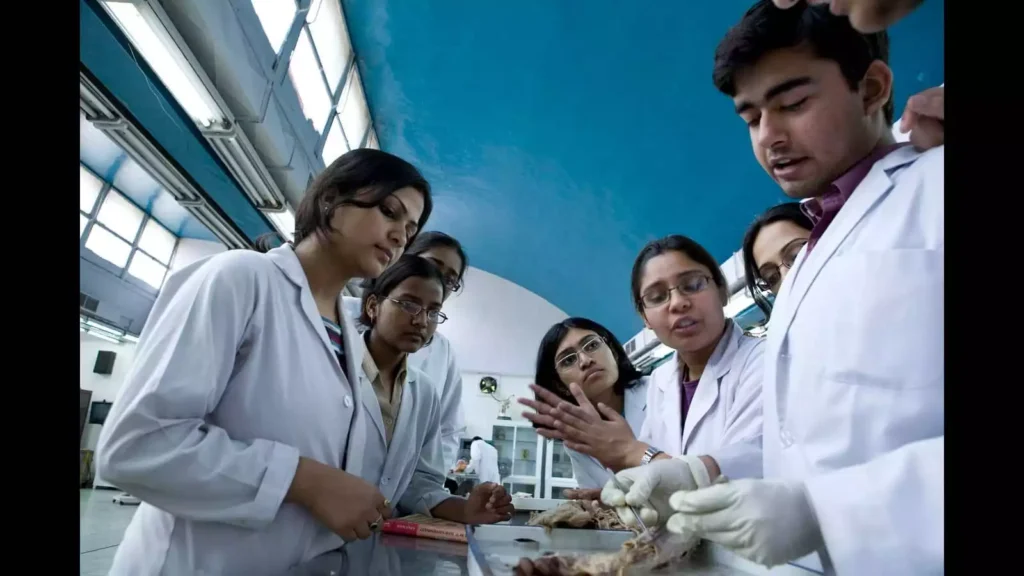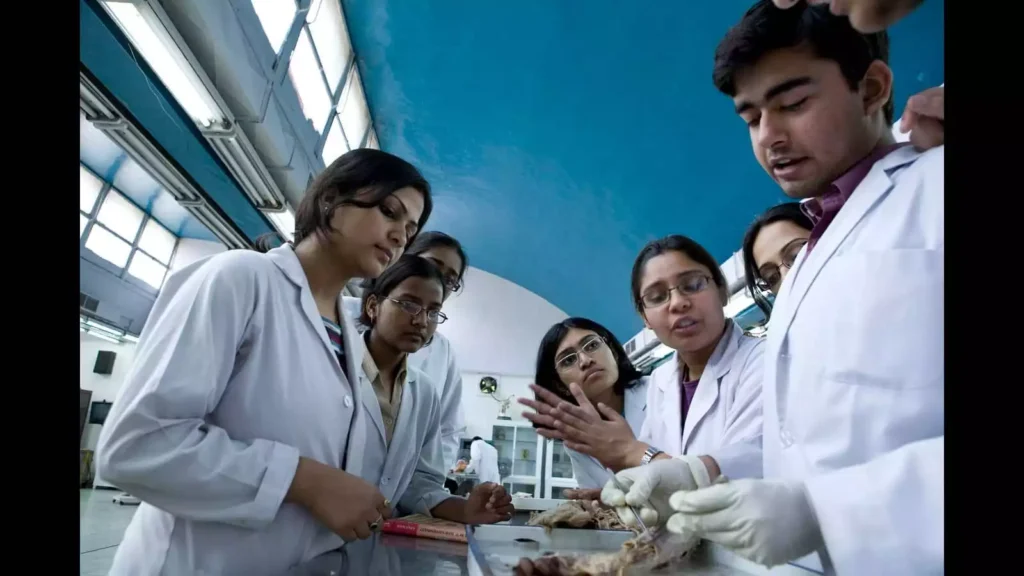While emphasizing critical recommendations in its recent report on Medical education in India, the Parliamentary Standing Committee on Health and Family Welfare has underscored the need for a comprehensive approach to enhance the quality of medical education in India.
Current Medical Education System in India:
- India’s medical education system is paradoxical – producing a significant number of physicians for the global healthcare workforce, yet many students choose to study abroad.
- Despite hosting prestigious institutions, concerns persist about the quality of medical education and healthcare delivery within the country.
- India boasts one of the world’s largest medical education systems, with 702 medical colleges reported by the Ministry of Health and Family Welfare in 2023-24.
- However, the quality of medical education exhibits significant variations, with a notable challenge being the uneven distribution of medical colleges.
- The WHO recommends a doctor-population ratio of 1:1000, and according to the NMC, the country has already achieved a ratio of 1:856.
- The actual health research expenditure as a percentage of GDP has consistently remained at 0.02% since 2021-22.
Medical education regulation in India:
Key recommendations:
Addressing Quality Disparities:
- Emphasizes the urgent need to bridge the wide-ranging quality variations in medical education across India.
- Identifies the uneven distribution of medical colleges as a major challenge, concentrating them in urban areas and leaving rural regions underserved.
Expanding Medical Seats:
- Urges the enhancement of both undergraduate (UG) and postgraduate (PG) medical seats to meet the escalating demand.
- Highlights the critical issue of a significant shortfall in available seats, especially at the PG level, with only 1/20th of the required seats for the 2 million annual UG medical student influx.
Optimal Infrastructure Utilization:
- Recognizes the government’s scheme of establishing new medical colleges but underscores the importance of optimal utilization of existing infrastructure.
- Calls for strategic planning to maximize resources and improve efficiency in achieving the goal of increasing the number of seats for medical education.
- Emphasizes the critical importance of maintaining the highest standard of medical education while addressing seat shortages.
India-Specific Approach for Specialists:
- Advocates for a comprehensive India-specific strategy in creating seats for specialists.
- Stresses the importance of identifying healthcare needs for the next 20-25 years and producing specialists aligned with disease burdens, rather than randomly increasing seats in certain specialties.
Standardized National Entrance Examination:
- Recommends the implementation of a standardized national entrance examination to streamline the admission process.
- Aims to ensure fairness and transparency in seat allocation, addressing concerns about the guidelines for establishing new medical colleges and expanding undergraduate seat numbers.
Acknowledgment of Minimum Standards Regulations (UG-MSR):
- Acknowledges the comprehensive Minimum Standards Regulations issued in 2023.
- Identifies concerns during the examination regarding the guidelines for establishing new medical colleges and obtaining approval for expanding undergraduate seat numbers.
Fair Workforce Distribution:
- Recommends the National Medical Commission (NMC) to devise modalities for a fair distribution of the doctors’ workforce across the country.
- Suggests incentives, both monetary and otherwise, to encourage doctors to serve in underprivileged areas.
Competency-Based Medical Education (CBME) Guidelines:
- Commends the NMC guidelines on CBME Regulations, 2023, for their comprehensiveness and global comparability.
- Calls for increased transparency in implementing CBME, addressing challenges faced by medical colleges, especially those with limited resources.
Global Best Practices:
- Recommends that the National Medical Commission conducts a comparative study of the best practices of its counterparts in various countries.
- Aims to incorporate global standards and transform the NMC into an institution par excellence.
Eliminating “Ghost Faculty”:
- Recognizes the imperative to streamline the recruitment process to eliminate “ghost faculty.”
- Ghost faculty are teachers who exist only on paper but paid a salary.
- Recommends simplification of bureaucratic procedures, technological integration, and student-friendly reporting mechanisms to address zero attendance and ensure faculty accountability.
Faculty Retention Measures:
- Advocates essential steps for retaining faculty, including improved working conditions, transparent career progression, and recognition of excellence.
- Calls for clear criteria and milestones for promotions, with regular performance evaluations to identify and address concerns promptly.
Promoting Private Investment:
- Recommends exploring ways to promote private investment in medical education.
- Suggests providing incentives and regulatory support to private institutions interested in establishing medical colleges to enhance seat availability and encourage healthy competition.
Utilizing Technology for Education:
- Proposes the use of technology like distance learning and virtual classrooms to address seat shortages.
- Highlights the potential of these methods to accommodate more students in medical education without overwhelming existing facilities.
Financial Constraints and Research Ecosystem:
- A critical challenge is the insufficient funds allocated for medical research in India.
- Urgent measures are required to establish a robust research ecosystem within medical colleges, fostering a culture of innovation.
- Continuous curriculum upgradation is essential to integrate the latest advances in medical science, ensuring that medical education stays abreast of the evolving healthcare landscape.
Ref: Source
| UPSC IAS Preparation Resources | |
| Current Affairs Analysis | Topperspedia |
| GS Shots | Simply Explained |
| Daily Flash Cards | Daily Quiz |



